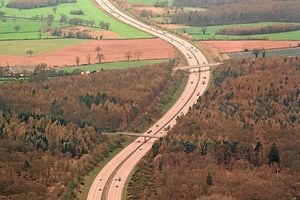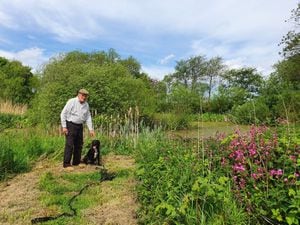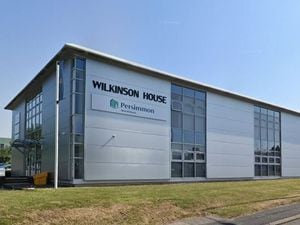30 years on - how opening of M54 brought new dawn for Shropshire
[gallery] The rain came down, the brollies went up and, 30 years ago today, a new future dawned for Shropshire.

Telford was connected. Connected, that is, to the main motorway network at last thanks to the M54, which was opened on this day in 1983 by Transport Secretary Nicholas Ridley.
It was the biggest leap forward since the coming of the railways for Shropshire's transport infrastructure.

It was a vital lifeline for Shropshire industry and particularly the industries in Telford which were feeling the full force of the recession of the early 1980s.Unemployment was high and traditional industries which had been such a key part of the east Shropshire scene were struggling.
Coupled with the designation of an enterprise zone in Telford, the new motorway laid the foundations of a revival of fortunes of the new town in the later part of the decade by making it more attractive and convenient for commerce and industry.
But it was not just about improving the communications infrastructure to give Shropshire businesses a helping hand. The M54 has also saved an incalculable number of lives.
Before the motorway arrived, the main route into Shropshire from the east was the A5. Clogged with lorries and cars, and particularly jammed during holiday getaway periods, it was a single carriageway road which was one long accident blackspot.
Fatal accidents were sadly commonplace. In contrast, fatal accidents on the M54 are rare.
The new route was many years in the making. It took 16 years and three planning inquiries. There was much controversy about the route which went through 700 acres of mainly farmland in Shropshire and Staffordshire. When the bills came in, it cost £3.5 million a mile.
Efforts were made to make the new motorway environmentally friendly. It was dubbed Britain's "first environmental motorway". It was not an idle claim.
Much of it is invisible in deep cuttings, and nesting boxes were installed under bridges.
On the negative side, apart from the loss of farmland, the motorway destroyed much of the site of what was once Tong Castle, and an archaeological rescue dig was done before the bulldozers and earthmovers did their work.
In line with the downgrading of the population target for Telford, and lower traffic forecasts, the new road was built as a two-lane motorway rather than as a three-lane as had been originally envisaged.
It was claimed that the road brought Birmingham within half an hour's travelling of Telford. But even at the time this smacked of optimism.
Another thing that was odd even at the time was that although the M54 connected Shropshire to the M6, it was a link only for traffic travelling south. It was argued that as this was the direction most traffic would be going, there was no need for a northwards link. Time and experience has changed the view about that and there are currently proposals which would make an M54-M6 link for traffic travelling north as well.
And 1983 did not, as you might have supposed, herald the opening of Shropshire's first motorway. That had come on December 11, 1975, when 4.5 miles of motorway dubbed the M54 Wellington bypass opened. It ran between Ketley and Hollinswood where it stopped abruptly in an obvious sign of unfinished business. It was another eight years before the extension to the M6 was opened.
Even after the opening of the M54 the problems of the A5 west of Telford to Shrewsbury continued, but were solved on August 11, 1992, with the opening of the £65 million M54 extension and Shrewsbury bypass.
M54 fact file:
The 18-mile long road cost the taxpayer £62 million three times the original estimate
Despite warnings that poor terrain made concrete surfacing unsuitable, three of the contracts for the M54 were built in concrete and only the most easterly used tarmacadam
In the first eight years, £5.3m was spent on repairs. The concrete surface in the Telford stretch was particularly troublesome and was eventually replaced by asphalt
The road was used as a testing ground by the Department of Transport. Some sections were surfaced using a mixture of cement and pulverised fuel ash, a waste product from power stations.
During the construction 250,000 trees and shrubs were planted as part of extensive landscaping
Eight nesting boxes were installed under bridges to encourage swifts to nest. The Department of Transport consulted ornithologists on the most suitable box design





